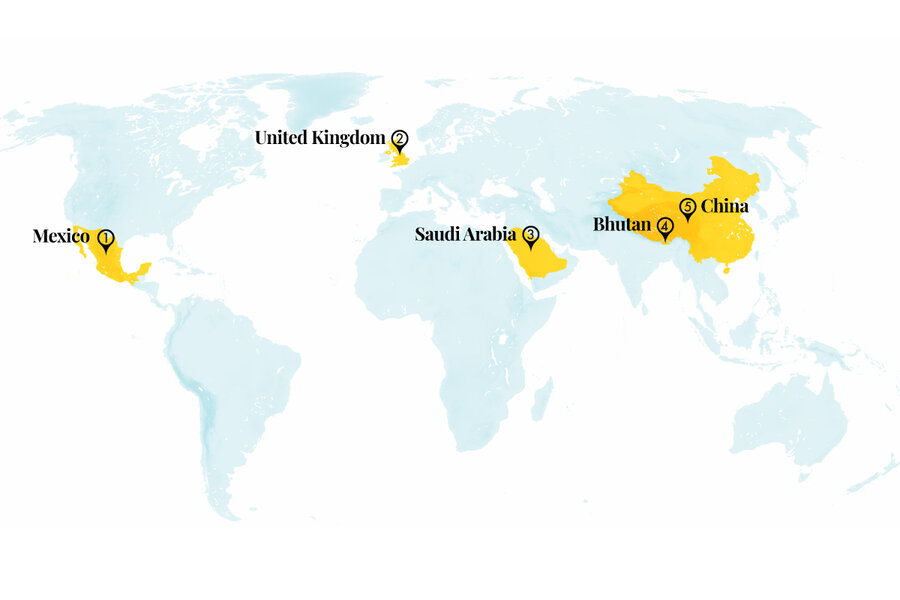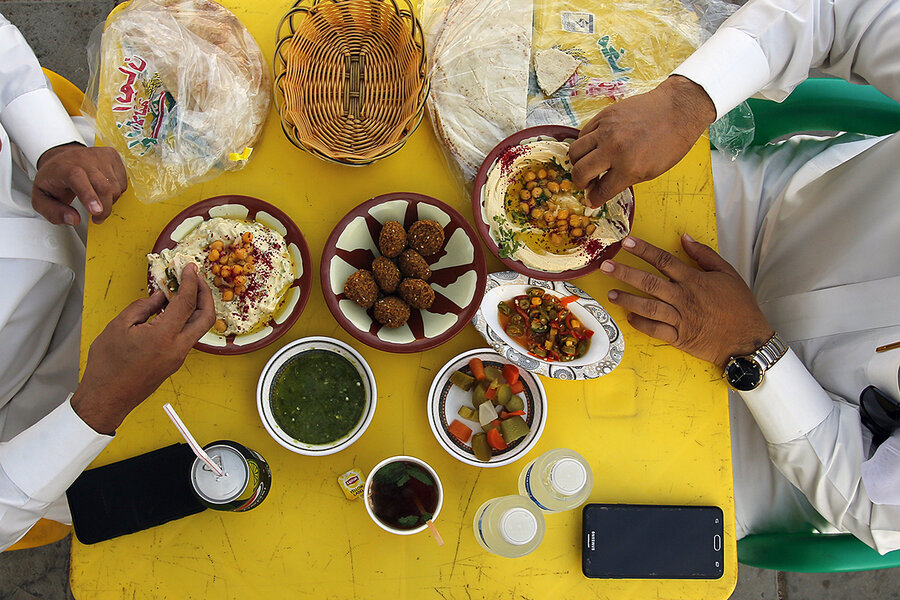From jaguars in Mexico to snow leopards in Bhutan, wilderness beckons
Loading...
1. Mexico
Mexico created 16 new Protected Natural Areas, expanding the country’s list of federally safeguarded places to 203. The recently added space, distributed among eight coastal states, equals more than three Great Smoky Mountains National Parks, or 651,265 hectares (2,515 square miles). Federal protections generally allow some tourism and sustainable development but promote wildlife and habitat conservation.
In Campeche state, which now includes the greatest amount of protected area in Mexico, the expansion of the Calakmul Biosphere Reserve includes seven Areas Voluntarily Destined for Conservation. That designation means that landowners and farmers of ejidos – communally managed federal lands typically used for agriculture – agree to sustainable uses of the land in cooperation with the government. Campeche’s protected areas include an important wildlife corridor used by jaguars and provide habitat for endangered Yucatán black howler monkeys and 350 species of birds. The smallest Protected Natural Area recently designated is Playa Delfines, a popular 10-acre beach in Cancún.
Why We Wrote This
In our progress roundup, space is a precious commodity, and humans ceding room to animals helps them to thrive. People also benefit from being able to choose where they call home – which is why Britain is funding more home remodeling for older and disabled individuals.
Mexico is one of the most biodiverse countries in the world, with 10% to 12% of the world’s species calling it home.
Sources: Mongabay, National Commission of Protected Natural Areas
2. United Kingdom
The U.K. is supporting older adults and people with disabilities with additional funds to adapt their homes to changing needs. Homeowners, renters, and those in social housing can apply to local authorities for a grant that helps cover improvements such as lighting controls, railings, or the addition of a downstairs room.
The grants are the first half of a two-year, £102 million ($123 million) program and part of putting “people at the heart of care” – a 10-year initiative to reform the country’s adult social care system. The program seeks to empower local councils to more nimbly make grants to improve independent living and reduce hospital stays. Grant amounts are income- and location-dependent. Those living in Wales can apply for up to £36,000 ($43,600).
The U.K. government already annually provides £573 million for local authorities to provide home improvements for disabled people. Since 2010, half a million homes have been renovated, backed by £4.8 billion in government funds.
Sources: Disability Insider, Gov.UK
3. Saudi Arabia
Startups in the Middle East are tackling high rates of food waste. The Food and Agriculture Organization estimates that a third of global food production is wasted. In Saudi Arabia, up to half of solid waste comes from food. Research in the region suggests a culture of generosity and hospitality is one factor on the consumer end of the high rates of waste.
With the Saudi government in the early stages of efforts to reduce waste and align with the country’s 2030 sustainability goals, for-profit businesses are addressing the problem with a range of solutions, from composting to food delivery. In the cities of Jeddah and Riyadh, the phone app Barakah (meaning “blessing”) connects customers with restaurants and grocery stores that offer fresh surplus food at a discount.
Some researchers think that marketing appeals to consumer religiosity could encourage people to counter food waste. Rabah Habiss, a co-founder of Barakah, said that a factor influencing the app “was our Islamic teachings, which stress the value of preserving food rather than discarding it.”
From Morocco to Egypt to the United Arab Emirates, other small businesses are promoting the value of “ugly” produce and restaurant meals that would otherwise be thrown out.
Sources: Arab News, Wamda, Frontiers in Sustainable Food Systems
4. Bhutan
Bhutan’s snow leopard population increased from 96 to 134 since the first national survey in 2016. Snow leopards live in the mountains of a dozen Asian countries; their habitats face multiple threats, including environmental degradation, poaching, climate change, and conflict with humans. As the global population of snow leopards declines, Bhutan has emerged as a promising source population for the region, given a vast stretch of suitable snow leopard terrain bordering India and China. Camera traps in 310 locations spread over 3,475 square miles documented the increase, suggesting that habitat conservation and anti-poaching measures are working.
As leopard populations rise, they could pose a threat to yak calves and the herding communities that share the leopard’s environment. Researchers recommend livestock insurance coverage, improved fencing measures, and awareness campaigns for residents to minimize possible harm. In the long run, a strong snow leopard population is a sign of a healthy mountain habitat. The rebound of this apex predator “indicates a healthy alpine mountain ecosystem, which is a critical water source for millions of people downstream,” says Dr. Pema Wangda, executive director of the Bhutan for Life Fund Secretariat.
Sources: World Wide Fund for Nature, Bhutan Foundation
5. China
A new desalination device produces drinking water more efficiently than ever before. The system, designed by engineers at Shanghai Jiao Tong University in China and the Massachusetts Institute of Technology, relies on natural sunlight to heat salt water. Thanks to a multistage configuration of evaporators and condensers organized into upper and lower sections, water flows in eddies, mimicking the thermohaline circulation of deep-ocean currents controlled by temperature and salinity. The water and salt are circulated so that the salt left behind during the evaporation process doesn’t clog the system – an issue in previous design attempts.
The researchers estimate the apparatus can produce over a gallon of drinking water per hour if built to the size of a small suitcase. They tested the model using water of varying levels of salinity and say each device can last years without need for repair. “For the first time, it is possible for drinking water produced by sunlight to be cheaper than tap water,” said graduate student Yang Zhong. “This opens up the possibility for solar desalination to address real-world problems.”
Sources: MIT News, Joule









